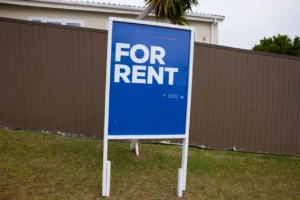A landlord must, at a minimum, provide a safe and sanitary dwelling to its tenants.

The Implied Warranty of Habitability: What Landlords Need to Know
The common law doctrine of the Implied Warranty of Habitability (the “Warranty”) requires a landlord to provide tenants with a habitable dwelling free and clear of defects. While a landlord need not provide a seamless or aesthetically pleasing dwelling, a landlord must, at a minimum, provide a safe and sanitary dwelling to its tenants.
This doctrine applies exclusively to private residential rentals. Tenants have a right to this guarantee whether or not the Warranty is actually written into the lease. It is critical for landlords to understand that the Warranty is a contractual obligation imposed on the landlord and therefore cannot be waived by the tenant.
DEFECTS COVERED BY THE WARRANTY.
The Warranty does not require landlords to make cosmetic repairs such as faded paint touch-ups, new carpet installation, or cosmetic appliance upgrades; however, landlords are required to remedy serious defects which constitute severe health and safety concerns including:
- Lack of adequate heat or air conditioning;
- Unsafe or inadequate electrical service;
- Lack of access to safe/drinkable water;
- Malfunctioning sewage systems;
- Serious leaks;
- Structural issues resulting in unsafe or unsanitary conditions;
- Vermin infestation; and
- Inability to secure the premises with locks.
However, as long as the structure, appliances, and finishes of a home are still useable, the warranty of habitability will not be triggered by complaints based on a worn-out floor or a “tired looking” fixture.
Need Legal Help?
Chat with a real estate lawyer near you. It’s only $5 for a 1-week trial. Ask unlimited questions.
REMEDIES AVAILABLE TO TENANTS FOR A BREACH OF THE WARRANTY.
Landlords should be aware of the possible remedies available to tenants for a breach of the Warranty. Remedies upon breach include rent abatement, surrender of possession with no further obligation to pay rent, damages, rent deduction upon repair, and other traditional contract remedies such as specific performance.
In order to invoke one of these remedies, the tenant must prove: (1) that the landlord was given notice of the defect or condition; (2) that the landlord was given a reasonable opportunity to repair the defect or condition; and (3) that the landlord failed to make such repairs.
Typical factors considered when determining whether a breach is material or not include: 1) whether the condition violates a housing law, regulation, or ordinance; 2) the nature and seriousness of the defect; 3) the effect of the defect on safety and sanitation; 4) the length of time for which the condition has persisted; and 5) the age of the structure.
The Warranty may be used as both a sword and a shield: a tenant may assert a claim against its landlord for a breach of the Warranty, or a tenant can use a breach of the Warranty as a defense to a landlord’s suit for rent or possession.
Landlords need to be aware of serious safety and health defects on their premises and ensure prompt and adequate repair to any such defects in order to protect themselves from any claims for a breach under the Warranty.
Understanding and complying with the Implied Warranty of Habitability is crucial for landlords to avoid potential legal issues and ensure their properties remain safe and habitable.
Source: JD Supra by Taylor Riedel













 Accessibility
Accessibility